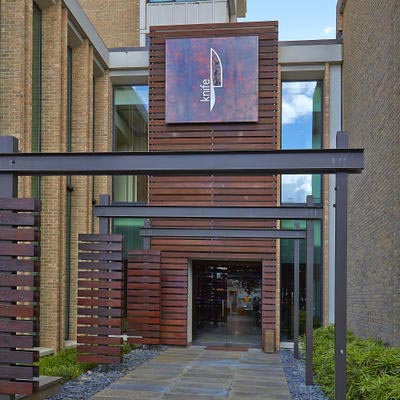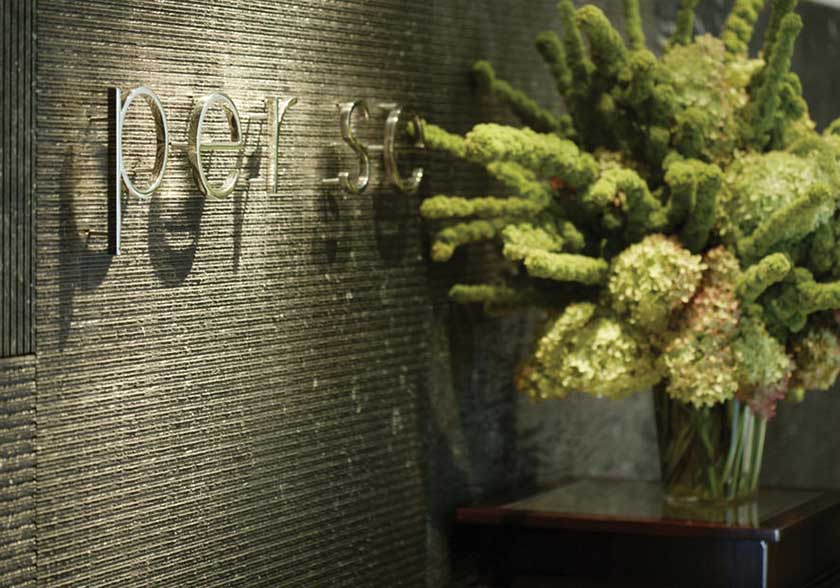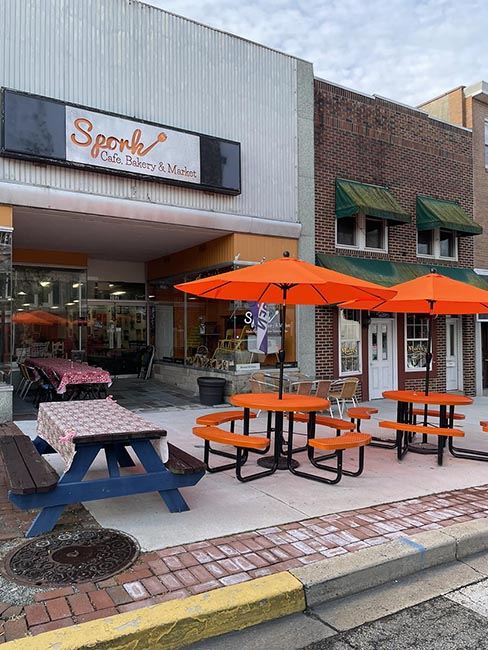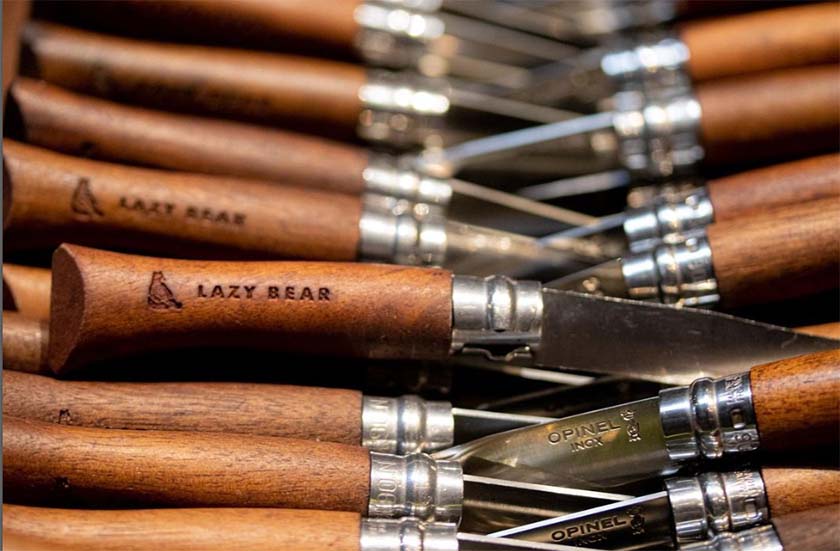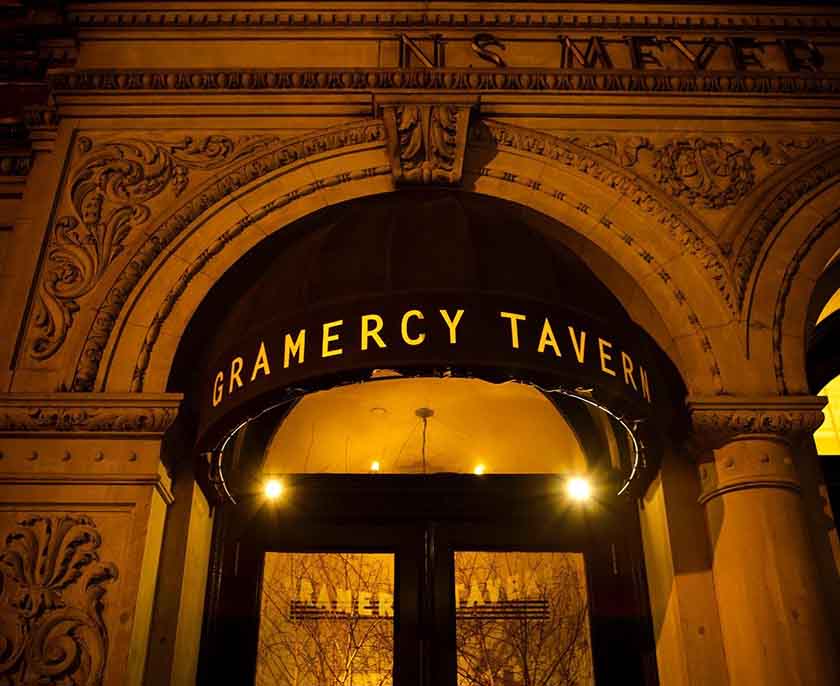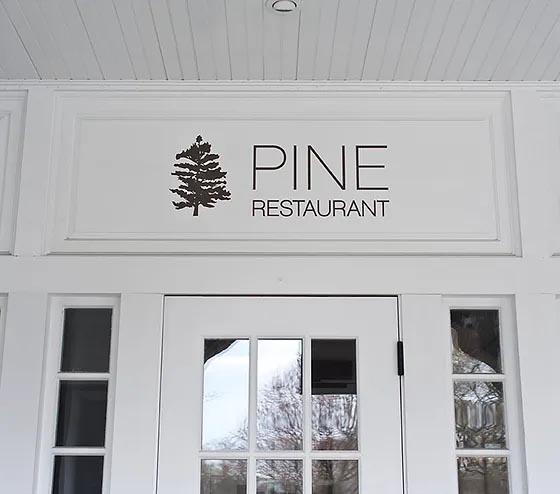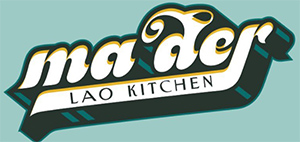Choosing a restaurant name can feel like a daunting task. Our restaurant name generator gives you dozens of possibilities of restaurant names—and the steps below show you how to use them to find the perfect name for your restaurant. Enter your name, type of food, and location in the fields below to get started.
*This generator is a brainstorming tool. These names have not been evaluated for potential trademark conflicts.
A restaurant name generator is great for brainstorming restaurant names, but that is just the first step to naming your restaurant. The next step is to refine those names and ensure that they are not trademarked by another business. We walk through the process below.
Step 1: Brainstorm a List of Names
Naming anything—including a restaurant—starts with a list of options. You can create your list using a name generator like the one above, or simply grab a pen and paper and write down everything that comes to mind.
Start with your name. Add family, friend, or pet names that hold special meaning. Consider the details of your location like street names, ZIP codes, area codes, and more. At this stage, the longer your list, the better.
Step 2: Refine Your Restaurant Name List
The next step is to go through your list and remove each name that doesn’t match your service style and cuisine. Then throw in some wild cards to make sure you’ve considered everything.
Consider Your Service Style
The best restaurant names tell your customers what to expect before they walk through your doors. A name like the “Starry Night Brasserie” suggests a slightly upscale French dinner spot. If your restaurant is a breakfast diner that specializes in extra-large Belgian waffles, however, that name wouldn’t be a great fit.
There are three major service styles to consider:
- Quick service restaurant: This restaurant does not have a waitstaff. Customers order, pay for, and pick up food from a counter. Pizzerias, barbecue joints, burger shacks, and sandwich shops are all great examples of a quick service model. Food is typically served in disposable packaging.
- Casual full-service restaurant: These are restaurants that have a full staff to take orders, clear tables, and present checks tableside. Casual full-service restaurants serve all kinds of cuisine, from pho to seafood or even trend-driven farm-to-table fare. Food is served on plateware, but tables may not have tablecloths.
- Fine Dining: Like casual service restaurants, fine dining establishments can serve any kind of food. They tend to have large service teams that include bussers, food runners, expediters, and hosts in the dining room as well as a full brigade of prep cooks, line cooks, sous chefs, and chefs de cuisine in the kitchen. Tables tend to have tablecloths, linen napkins, and a full set of silver and glassware at each setting.
Quick service restaurants can be chains, like Shake Shack and Chipotle, or local eateries, like your favorite barbecue spot or Indian takeout. Names in this category tend to be mouthwatering and give a vivid idea of what style of food they serve. They should also be easy to spell using a smartphone keypad, so they will be easy for customers to find on delivery apps, like UberEats, Postmates, and DoorDash.
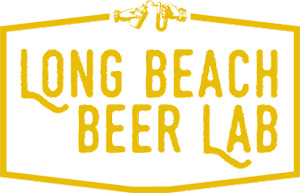
A “lab” restaurant is typically a casual spot. (Source: Long Beach Beer Lab)
Some popular words that immediately suggest quick service are:
- Cafeteria: This term is double-edged. It is used as a name for a food hall where customers serve themselves, but some high-end eateries specializing in comfort food use it, too.
- Canteen: Traditionally a snackbar on a military base, canteen is a fun word to signify quick restaurants that don’t take themselves too seriously. Cantine and cantina are popular French and Spanish alternatives, respectively.
- Garden: This is a popular term for informal Pan-Asian restaurants with names like Hong Kong Garden, Ginger Garden, and Thai Garden. It denotes a family-friendly atmosphere, as in the continuously popular Olive Garden.
- Joint: Casual and fun with a jukebox playing in the corner. You’ll probably want to include the type of food you’re serving in the restaurant name to get across what people can expect when they arrive at your restaurant.
- Lab: A lab is generally a low-price option that is slightly experimental. Boston’s Noodle Lab serves inexpensive bowls of broth that tie together the culinary traditions of Malaysia, Thailand, and Indonesia.
- Noodle: Gets straight to the point. There will be bowls of noodles here. This can be the end of a restaurant name, as in North Hollywood’s Pa Ord Noodle, or it can be followed by another restaurant word, like stop, shop, wok, etc., as in the Canadian restaurant Noodle Wok.
- Palace: This word sounds high-end, but you tend to see it most often used in the restaurant names of quick cooking, take-away spots, such as in Pizza Palace, India Palace, or China Palace.
- Shack: Shacks are fun, laid-back, and often have a beachy vibe. Avoid this term if you want your restaurant to be on the fancy side.
- Stand: A stand is a spot to quickly pick up food with little to no seating. Typically stands have no waitstaff, only counter staff.
- Stop: This calls to mind a small operation, and usually has a specific food attached to it like Burrito Stop, Ramen Stop, or Kebab Stop.
- Wok: Wok immediately calls to mind quick-cooked dishes from various Asian traditions.
If your restaurant concept has a waitstaff, but no tablecloths, you are entering casual restaurant territory. This is the world of Applebees, TGI Fridays, and your local pasta spot. Typical restaurants in this category are cafes, bistros, and chop houses.
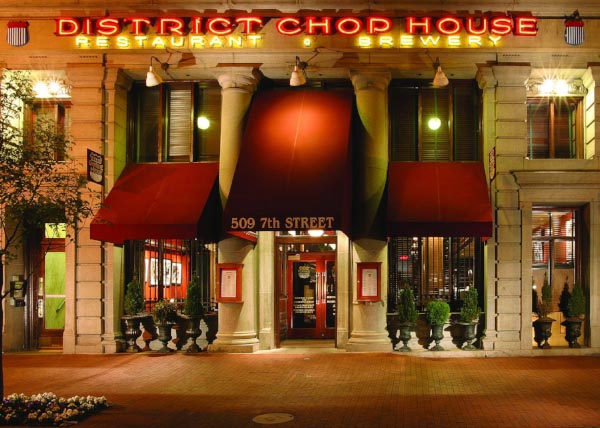
A chop house usually serves grilled meats in a casual atmosphere. (Source: District ChopHouse)
Like a quick service restaurant, casual restaurants need a distinctive and descriptive name; Legal Seafoods is a great example. A casual eatery can take a bit more poetic license if inspiration strikes, however.
These are common words you’ll find in casual restaurant names:
- Bar: If you use the word bar in your restaurant name, you should be open late and serve plenty of different alcohol options. Bars are typically casual, and serve popular share plates, like loaded fries or nachos.
- Bar & Grill: A bar and grill is decidedly more extensive in service and menu than a plain, old bar. It is still a place where customers can expect a relaxed atmosphere and maybe a television above the bar.
- Cafe: People usually think of coffee and light fare when they hear this term in a restaurant name. It’s possible to dress this word up or down, though the word typically suggests a laid-back atmosphere. Putting a simple word in front of “cafe” can create a simple and memorable name for your restaurant, like Nashville’s Bluebird Cafe.
- Chophouse: A chophouse is a restaurant that specializes in steaks, chops, and similar dishes, and mainly focuses on traditionally cooked meats accompanied by fine wines and good ales. This word is good in combination with a location—like the Hanover Street Chophouse. Area codes and people’s names are also great fits here, like 801 Chophouse or Bob’s Steak & Chophouse.
- Diner: Diners are often very casual and serve a mix of breakfast foods and other classic American dishes. Quick, friendly service and late hours are the first things that pop into mind after hearing the word.
- Eatery: Eatery runs the gamut from laid back to upscale. Often refers to American food, but can also work for other types of cuisine. Names with “eatery” in them tend to rely on location to provide the rest of their title, as in the Thompson House Eatery or the Laconia Hill Eatery.
- Grill: Grill is a versatile word for a casual restaurant. Grills tend to also include their cuisine style in their name, as in Moe’s Southwest Grill or Tzatziki Greek Grill.
- Kitchen: The word “kitchen” implies an inviting, informal setting where patrons will enjoy dishes inspired by home cooking. They might also see food being prepared. Cocina, Cucina, and Küche are popular Spanish, Italian, and German versions.
- Pub: Pubs often offer deliciously greasy or cheesy bar food along with an extensive list of craft beers. Consider going a different route if you specialize in a different type of alcohol, or don’t serve beer at all. The Gastro Pub is a slightly more gourmet version of the pub trend, though restaurants tend to avoid using the word “Gastro Pub” in their name, and opt for simply “pub.”
- Tavern: A tavern is a higher-end bar. Taverns have more attentive service and more expansive menus than bars.
Fine dining restaurants create their own naming rules. A look across currently operating fine dining restaurants, as well as high-end restaurants throughout history, shows four basic naming trends: nouns, proper names, personal stories, and figures of speech. Unlike casual and quick service restaurants, fine dining restaurants tend not to include their type of cuisine or a word to define their style of service.
Here are some popular strategies for standing out in the fine dining realm:
High-end restaurant names tend to be a little more puzzling than casual and quick-service restaurants. The experience of their restaurant begins with the name, so at this tier, adventurous names are more important than names that telegraph the type of food on the menu.
Consider Your Restaurant’s Cuisine
If your restaurant will serve French, Italian, or Japanese food, then your restaurant ancestors have done a lot of work for you. These culinary traditions have standard naming hierarchies that define the level of service at various types of restaurants. If you are planning to serve French fare with early hours and lots of coffee, you are a cafe. If you are an Italian restaurant with fine dining ambitions, you just opened an Osteria. A casual Japanese grill is easily an izakaya.
Here is the basic spectrum of each, listed from most casual to most upscale:
- French: Cafe, Bistro, Brasserie, Restaurant, Chez
- Italian: Pizzeria, Trattoria, Vinoteca, Ristorante, Osteria
- Japanese: Izakaya, Shokudo (Teppanyaki/ Sushi-ya), Teiishoku-ya, Kaiseki
These naming traditions tend to describe the type of food served, as well as the culinary style it comes from. Most Americans are familiar with the dish that gives a pizzeria its name. In the same way, a cafe is defined by its excellent coffee program, while an Izakaya is named after the variety of skewered meats and vegetables that are cooked over a small charcoal grill.
Bistros and Trattorias are French and Italian restaurants that offer full service and a wide ranging menu. Italian vinotecas are wine-focused. A Japanese Sushi-ya will serve, of course, sushi.
If you are serving any style of food that is exotic to your location, choosing the name of a single, signature dish or ingredient can work. La Paella Spanish restaurant is a good example, as is Chipotle, or the Philadelphia restaurant Stargazy, named after the classic British dish Stargazy pie.
Try Some Wild Card Strategies
Regardless of your service or cuisine style, there are some tried and true naming conventions that can work to generate restaurant name ideas. These can be combined with the information in the previous two steps to create your full, formal restaurant name.
Try a few different combinations. Play with the order of words; Bistro on the Boulevard has a different ring than The Boulevard Bistro. Come up with three to five restaurant name ideas to test on friends and business partners. Then sit down with your favorite options, and make sure they are available.
Step 3: Screen Your Restaurant Name
If you have thought of a perfect restaurant name, it is possible that other business owners have thought of the same one. A Google search for “Pane e Vino,” for example, displays a mountain of results in cities all over the world. Especially in the age of social media and food delivery apps, your restaurant’s name should be unique so it is easy for your customers to find you.
Before finalizing your restaurant name you should check it on multiple platforms. Here are a few places to start:
A completely singular name may not be important to smaller operations. If you are operating a small-town diner, it may be fine if your restaurant shares a name with an eatery in another state. Just do a Google search for Tequila Mockingbird, and see how many bars in different locations share the name. If you have plans to grow your business to multiple locations, however, it is a good idea to trademark your business name.
Step 4: Trademark Your Name (optional)
Once you have settled on your perfect restaurant name, and determined that there are no other conflicting businesses nearby, you should consider protecting your name and brand with a trademark. Processing a full federal trademark can take three to four months.
A trademark is wholly optional. You can start a restaurant business without trademarking it. But if you choose not to trademark your business name, you may be forced to rebrand at some point in the future if a competing business with the same, or similar, name chooses to trademark their business.
You trademark your business with the United States Patent and Trademark Office (USPTO). You can find the necessary forms and information on the USPTO website. The fees vary based on your business type and business size. The full list of filing fees is available on the USPTO website. You can file all the forms yourself, but if the list of fees and application forms makes your eyes cross, a legal services platform can help you navigate the process.
Tools for Trademarking Your Business
 |  |
Trademark Registration services: $599 + Federal Fees | Trademark search and registration: $199 + filing fee |
Just like McDonald’s has trademarks on its restaurant name, the name of the Big Mac, and the slogan “I’m lovin’ it,” you can trademark more than your restaurant name. You can trademark your logo as well as distinctive menu item names and associated slogans.
Restaurant Name Frequently Asked Questions (FAQs)
The best way to name a restaurant is to brainstorm a lengthy list of possible names, and then refine that list based on your service style, cuisine type, and other variables. With your short list in hand, search for conflicts with other restaurants in your area.
Unique restaurant names typically involve personal details like family names or words that hold special meaning for the restaurant owner. Some owners use the name of beloved pets or favorite childhood dishes. The most unique restaurant names tend to be the most personal. And personal names have the greatest chance of not conflicting with existing businesses.
Finding a good restaurant name has three major steps; brainstorming a list, refining the list, and researching potential conflicts with existing businesses. Using a restaurant name generator like the one above is a great way to complete the brainstorming step.
Using artificial intelligence (AI) is a fun way to brainstorm restaurant names, but it can’t be the only method you use to name your restaurant. AI platforms generate a lot of language quickly, but they are not equipped to check trademark databases or even look up the names of restaurants in your town to avoid overlap—so brainstorm away! But then, work through the additional steps of checking local restaurant names, social media, and online ordering platforms to refine your list.
You can trademark a restaurant name by registering with the United States Patent and Trademark Office (USPTO). For small, independent restaurants that only plan to operate in a single location, the expense—usually between $500 to $1,000—of trademark registration is not always necessary.
A trademark can protect your restaurant name, logo, menu item names, or slogans affiliated with your brand. Trademarking is most important for restaurants that plan to franchise or otherwise expand into multiple locations, though small restaurants may still want to pursue trademarks too.
If you have spent time building your restaurant concept and don’t trademark your name, you could be forced to rebrand by a competing business that chooses to pursue a trademark. Registering a trademark is not a one-time process; you’ll need to renew your trademark every 10 years.
Bottom Line
When you start a restaurant, you need a unique name. The best restaurant names also let customers know what style of food and service to expect, without being so common that you might be confused with a competitor. Once you find a good fit, you’ll need to do a search to ensure that you can get your restaurant name as a domain name and social media handle.
